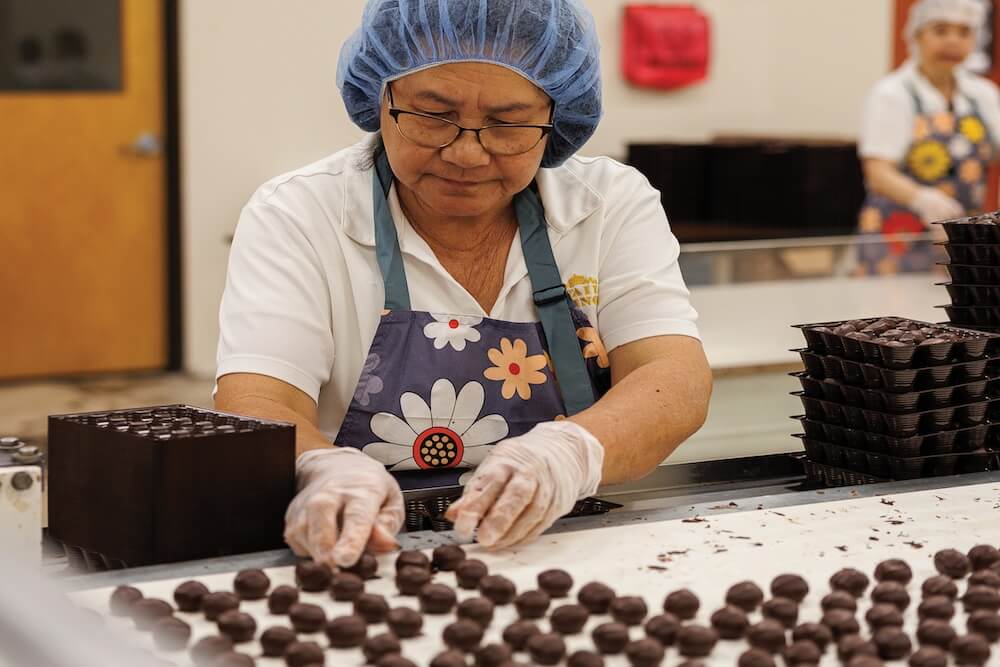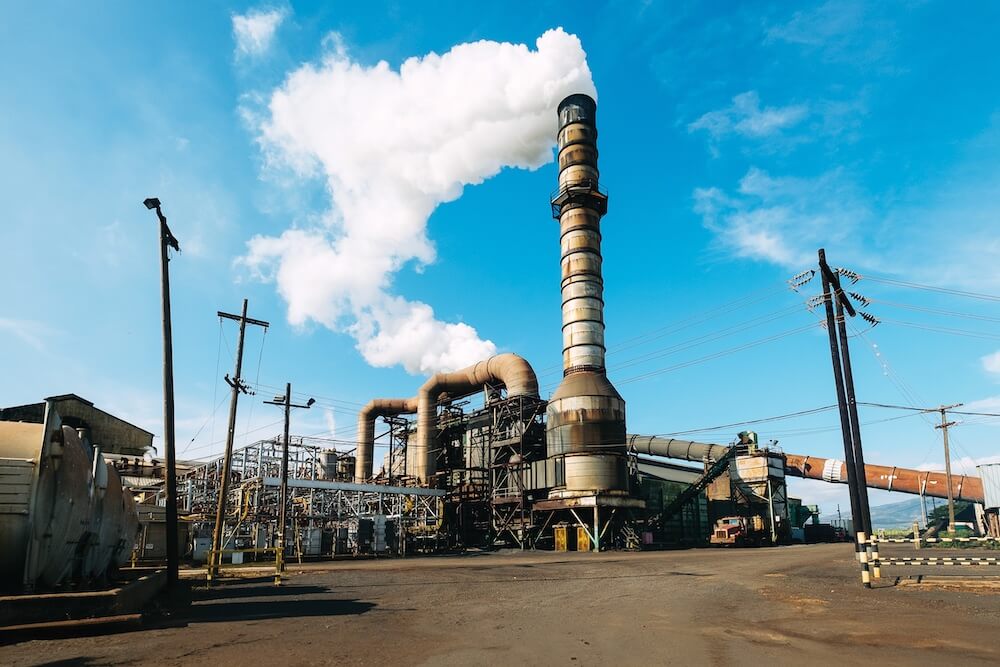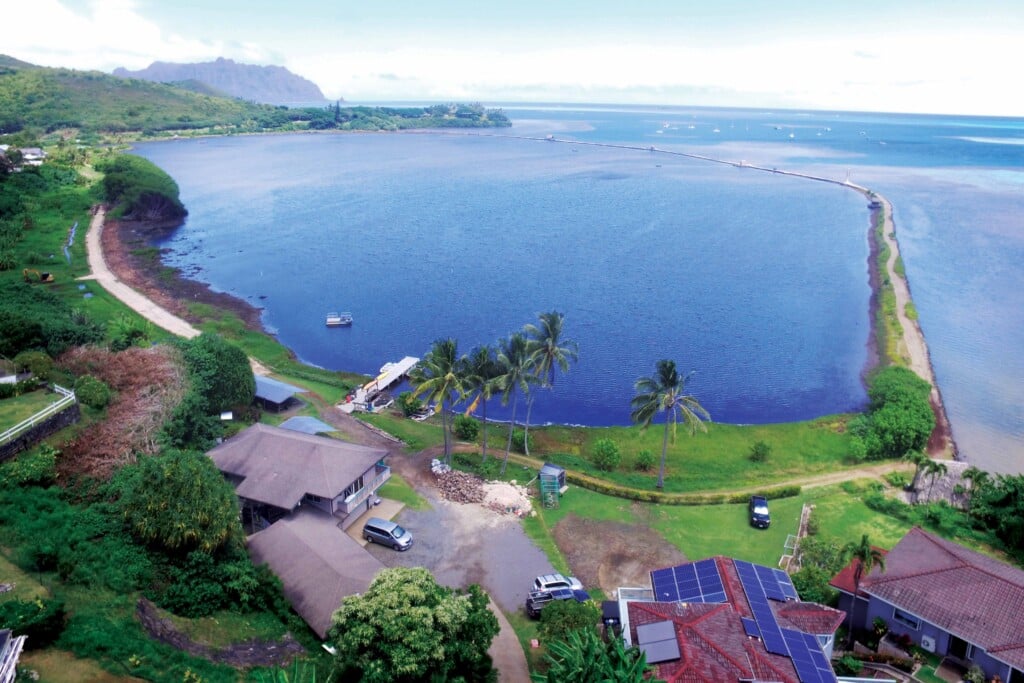Their Packaging Implies the Mac Nuts Are Hawai‘i Grown. They’re Not.
Hawaiian Host and Mauna Loa are using cheaper foreign nuts. Hawai‘i growers and companies selling local nuts want a label-of-origin law with real teeth.

Hawai‘i’s macadamia nut farming industry is in crisis and a state law that takes effect Jan. 1, 2026, has exceptions that will diminish its relief.
In 2021, mac nuts were the state’s second-most important agricultural commodity, generating $62.73 million in revenue, according to an annual report released by the state Department of Agriculture. In 2022, mac nuts dropped to fifth place with just $33.18 million generated and by 2023, the last year for which data is available, mac nuts ranked seventh, generating only $30.91 million.
I spoke with people from three brands that exclusively use Hawai‘i-grown macadamia nuts in their products. And I spoke with the state’s biggest mac nut seller by far, Hawaiian Host Group, which also owns the Mauna Loa brand. Both brands now use cheaper foreign nuts even though their packages emphasize Hawai‘i but do not mention that the nuts are foreign grown.
Mac nuts from Africa
Macadamia nuts are an iconic Hawai‘i commodity, but imported nuts are increasingly infiltrating the local market. “Mac nuts have been imported from other areas for probably decades, but when it really started to become a problem and farmers began to take notice was during the pandemic,” says Jeff Clark, president of Hāmākua Macadamia Nut Co.
According to its website, Hawaiian Host, which acquired the Mauna Loa brand in 2015, “currently has 80% of macadamia nut sales across Hawai‘i,” and the company has said tourism accounts for 65% of sales for the two brands. So, when the pandemic halted tourism, Hawaiian Host almost went bankrupt. Around that time, both brands switched from buying most of its nuts locally to purchasing nuts grown overseas for a fraction of the cost.
“They actually shut down their facility in Kea‘au in 2022, which used to crack pretty much all the nuts” on Hawai‘i Island, Clark says. After that, “they imported essentially 100% of their needs from foreign sources.”
Chad Cleveland, owner of Ahualoa Family Farms, says the move to imported nuts was a huge blow to mac nut growers on Hawai‘i Island: “Farmers did go out of business or a lot of them didn’t even harvest. And that’s kind of when some of these other countries had a lot of these new plantings mature. So then there was a flood of foreign-grown nuts that you could buy for pennies on the dollar, which affected the market here.”
Based on public import data, Clark says, “Hawaiian Host brought in 1.5 million kernel pounds of nuts in 2024. … That’s about 30% of what’s grown in the state.” Meanwhile, he says, “we have farms that are going out of business because they have no market. Mauna Loa is not buying it.” The website Import Genius, citing U.S. customs data, indicates Hawaiian Host and Mauna Loa are receiving nuts from South Africa and Kenya.
(At press time, South African exports to the U.S. were hit with a 31% tariff, and Kenyan exports with a 10% tariff. The impact on Hawaiian Host’s sourcing was not immediately clear.)
When I asked to interview a Hawaiian Host representative, I received an emailed statement from President and CEO Ed Schulz. He acknowledged Hawaiian Host buys foreign nuts but refused to disclose from which countries and what percentage of their nuts are imported.
“To fulfill the high demand for our products, we buy additional macadamias from other Hawaiian growers that we process in our local facility as well. In the past two harvest years, for example, we have purchased every high-quality Hawaiian macadamia that a small or large farmer wanted to sell us. … Yet, as we sell our products in 49 states and export to over 23 countries around the world, we need a significant amount of macadamias that exceeds what we can source from our own local orchards or other high-quality growers in Hawai‘i.”
At least eight mac nut companies say they’re committed to using only Hawai‘i-grown nuts in their products, according to the Hawai‘i Macadamia Nut Association. Many of these companies grow their own nuts and purchase additional nuts from other local farmers.
Island Princess and its parent company, Hawaiian King Candies, purchased from 46 Hawai‘i growers this past year, says owner Patrick Haddad. His reasoning: “If I don’t help the grower, I’m going to be alone one day.”
But these brands can only buy so much. “We’ve purchased in the past from about 150 independent farmers. Today, we only buy from a few” because of recent economic conditions, Clark says. “Mauna Loa and Hawaiian Host are using cheaper nuts from South Africa, mostly, and so I need to compete with them in the market. I can’t pay a Hawai‘i price to local farmers, because I can’t compete with Hawaiian Host using their cheaper kernel.”
Cleveland echoes Clark: “Of course, foreign grown nuts are going to cost far less money, so they’re going to be less expensive on the shelf when we’re barely scratching by with our margins to even market our nuts at a reasonable price. It’s very difficult for us with our economies of scale.”
Their biggest gripe with Hawaiian Host is not that it outsources its nuts. The complaint is that the company deceives consumers with packaging that showcases Hawai‘i but does not disclose the nuts are from elsewhere.
Misleading marketing
A lot of tourists and locals want to buy made-in-Hawai‘i products – and are often willing to pay more for the real deal.
“If you look at any of the packaging that Mauna Loa and Hawaiian Host have, it’s in their (brand) name,” says Clark. Individual product names include AlohaMacs and Island Macs. He says the companies are “using all these crafty marketing terms to market their product without saying Hawaiian nuts. But they’re cleverly dancing around that.”
Mauna Loa’s website says the design of the new boxes for its milk chocolate covered mac nuts is “inspired by the breathtaking Ko‘olau mountains of O‘ahu.” A label that calls the nuts “the original gift of aloha” appears on the packaging of many Hawaiian Host products, alongside Hawai‘i imagery such as Diamond Head, lei, waves and women in traditional Hawaiian attire.
“The one thing that gets me probably the most is just the deceptiveness,” says Ahualoa Family Farms’ Cleveland. “It hurts my heart just to know that these people, whether they’re a visitor or someone who lives here or who is from here or is Hawaiian, thinks they’re getting an authentic Hawai‘i-grown and produced product.”
The Hawai‘i Macadamia Nut Association advocates for a labeling law from the state Legislature that would require brands to clearly state where their macadamia nuts are grown. According to Clark, every member of the association – except for Hawaiian Host – agrees it’s “not fair that they can use the marketing power of Hawai‘i while not using the ag aspect of Hawai‘i.”
Clark says Hawaiian Host saw that labeling regulations were likely coming, so it began buying local mac nut farms in 2023.
“For many years, they have not had a farm at all. They’ve only been a cracking facility and a brand. Now they have a farm, but they’ve reduced that farm by about 50% and they are now advocating for getting a co-op facility built by the government,” he says.
The first label-of-origin bill failed in the state Legislature but a watered-down version was approved on its second attempt. It was signed into law in June 2024 and is set to take effect on Jan. 1, 2026.
“We were advocating for all macadamia products to be included under this bill, which would have included chocolate covered and even cookies and things like that to have to label if they’re using Hawaiian or foreign nuts,” Clark says.
But the law that actually passed excluded macadamia nut products with multiple ingredients, such as chocolate-covered macadamia nuts or macadamia nut cookies. Currently, the label-of-origin legislation covers macadamia nuts that are plain, salted, honey-roasted, coconut and coffee-glazed, Maui onion, chili-spiced and other seasoning and flavor varieties.
“That’s a big hole in the market,” Clark says, adding that the macadamia nut association hopes a more comprehensive labeling law passes soon.
In his emailed statement, Hawaiian Host’s Schulz says his company fully supports the label-of-origin law that goes into effect January 1, 2026. “This year, we even advocated at the State Legislature for additional labeling laws that would require ‘Hawaiian Macadamias’ to not only be grown in Hawai‘i, but also processed here. The processing phase involves removing the husk, drying the nut, cracking the shell and roasting the kernel.”
Clark says he opposes Hawaiian Host’s proposal to make local processing a requirement for the Hawai‘i label. “I oppose the bill, not necessarily because I oppose the idea of processing in Hawai‘i. Clearly, we support that. I oppose it because they’re the very guys that reduce the capacity to crack. … We still don’t have enough capacity to crack all the nuts grown here.”
Concerns about lacking sufficient infrastructure are where they find common ground. “That’s why our industry’s focus should be to grow together,” says Schulz. “To do this, we need a modern co-op processing facility that gives all growers, large and small, economies of scale to compete on a global market. That way, we can bring a large number of jobs from China back to Hawai‘i.”
Made in Hawai‘i vs. elsewhere
Most of the state’s mac nut farms are in the Hāmākua, Puna and Kohala districts of Hawai‘i Island, which is where Hawai‘i’s first commercial macadamia nut trees were planted over a century ago. Mac nut trees thrive in warm, subtropical conditions that get consistent rainfall.
“The quality of what feeds the mac nuts, the water and soil, is the best in the world,” says Hawaiian King Candies’ Haddad. “Water, because we are the furthest from any continent, so we are one of the least polluted areas. Second, the soil is renewed due to the fact that it’s a volcanic soil, and the absorption of the mineral is much better in Hawai‘i than anywhere in the world.”
Clark says you can taste the difference: “If you think of where else macadamias are grown – Australia, South Africa, Kenya, Brazil, Guatemala and now China – each has their own kind of growing conditions, and different types of soils. None is the same as what we grow in, which is purely volcanic type soils. So that is really the difference, that creamy, buttery texture that we get out of the macadamias that we grow here.”
Cleveland says sourcing macadamia nuts from foreign countries comes with uncertainties, particularly regarding freshness, food safety, and ethical practices. He adds that imported nuts may spend extended periods in storage before being purchased, processed and transported, which can impact their quality. “That kind of taints the quality or perception of Hawai‘i-grown nuts” if they are being falsely marketed as such, says Cleveland.
This issue of protecting Hawai‘i’s brand from deceptive marketing goes far beyond mac nuts: Kona coffee, sea salt and mamaki tea have provoked similar controversies in recent years.
“Everyone deserves to know what they’re purchasing so then they can make that educated decision on who they want to support, and, yeah, maybe they need to buy the cheapest one. That’s fine as long as they know what they’re getting,” Cleveland says.









